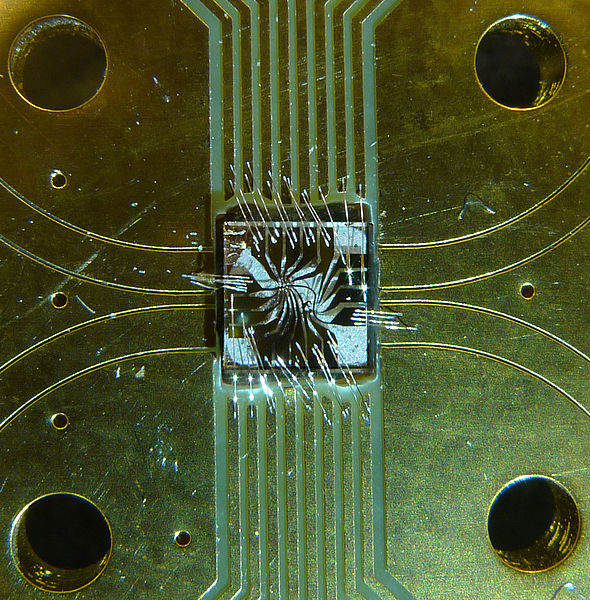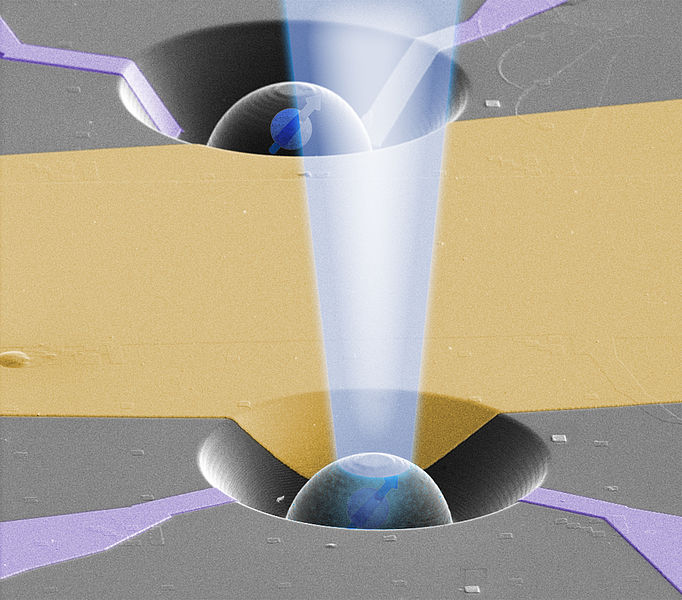16 November 2015
Magnetic field sensors have important applications in our daily lives. The MRI scanners used in hospitals detect the small magnetic fields generated in our body, enabling images with the spatial resolution of one tenth of a millimetre to be created. Magnetic field sensors are also used to retrieve the information encoded in the hard-drives of computers. It is now even possible to measure the magnetic fields from individual molecules. In research published today in Nature Nanotechnology, researchers from Delft University and the Foundation for Fundamental Research on Matter (FOM), in collaboration with colleagues at Macquarie University (Sydney, Australia) have been able to increase the sensitivity of a magnetic sensor one hundred times, by creating an ‘intelligent’ sensor based on only a single electron trapped in a diamond. Sensors with the capability to very precisely detect weak magnetic fields and to discriminate small spatial features could lead to many new applications in medicine and electronics.
Intelligent quantum sensors.
The ultimate limit in spatial resolution can be achieved by using the spin of a single electron as a sensor. A single spin behaves as a tiny quantum MRI-scanner that can be brought very close to samples as small as a single biological molecule to detect the magnetic fields generated by the molecule.
With a quantum MRI-scanner, the magnetic field is estimated by making a sequence of measurements on the electron. Normally, these measurements are performed using fixed settings that are not ideally suited to a specific situation or environment.
The Delft group improved on this by building an ‘intelligent’ quantum sensor, which can automatically optimise the measurement settings for all different conditions. The device analyses information about the magnetic field 'on the fly', using the measurement outcomes in the process to calculate in real-time the best settings for the next measurement.

Diamond defect
The sensor is built using the ‘spin’ of a single electron trapped in a defect of a diamond. This defect, known as nitrogen-vacancy centre, traps a single electron that can be precisely controlled with laser and microwave pulses. Magnetic noise in the diamond chip is strongly suppressed by using ultra-pure artificial diamond instead of the naturally occurring variety. Ultrafast electronics ensures that the adaptation of the measurement is done in real-time, performing the measurement as fast as possible.
Results from the TU Delft group, appearing today in Nature Nanotechnology, show that the intelligent quantum sensor increases the precision of the measurements by a factor of 100 for the same sensing time, compared to what has been shown in earlier experiments. The ability to adapt in real-time to the specific conditions of the experiment can reduce the number of measurements required to estimate the magnetic field from more than 600 to 200, significantly increasing the measurement speed.
Cryogenic temperatures
The diamond chip was cooled to cryogenic temperatures for optimal performance. The researchers expect that these results can be extended to quantum sensors operating at room temperature, paving the way to real-world applications.
Intelligent quantum sensors will enable fast imaging of the structure of single molecules, providing useful information for medical diagnostic or pharmaceutical development. They may also be used to map the weak magnetic fields generated by currents in micro and nanoelectronic devices, a valuable tool in the design of advanced electronic circuits.
For more information
Reference:Optimized quantum sensing with a single electron spin using real-time adaptive measurements, C. Bonato, M. S. Blok, H. T. Dinani, D. W. Berry, M. L. Markham, D. J. Twitchen and R. Hanson, Nature Nanotechnology. DOI: 10.1038/nnano.2015.261
Links:















